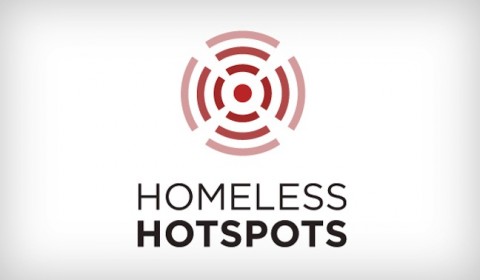A few weeks ago at the South by Southwest (SXSW) Festival in Austin, Texas, the advertising agency BBH Labs put a radical new idea into action. The five-day festival includes musical performances, film viewings, and perhaps most importantly, a technology forum “offering keynote presentations, panel sessions, book readings, meet-ups, workshops, and conversation that provide hands-on training as well as big-picture analysis,” according to their website.
But aside from presenting accomplished artists as well as up-and-comers, the festival also serves as an opportunity for advertising agencies to test new marketing schemes on a highly specific and lucrative demographic: affluent geeks.
Since Wi-Fi has been traditionally difficult to come by at SXSW, BBH Labs hired thirteen homeless people from the Front Steps Shelter in Austin to carry wireless hotspots around the festival and sell Wi-Fi access. They called the initiative “Homeless Hotspots.” BBH paid the participants $20 upfront, plus a minimum of $50 a day for roughly six hours of work. Interested patrons at SXSW would walk up to the human hotspot, ask for the access code and make a small payment. The recommended donation was $2 for fifteen minutes of use, and all money paid for the Wi-Fi went straight to the participants.
An important part of homeless culture is the organization of “street newspapers” completely written and circulated by the homeless. These papers aim to raise awareness about homeless issues and collect donations to help fellow homeless people improve their situations, hopefully raising enough money to move from shelters to actual housing. BBH saw an opportunity to modernize this kind of community development program and make it more widespread. The Homeless Hotspots idea was intended as a way to “bring street newspapers into the digital age,” according to the program’s website.
The Homeless Hotspots idea ignited a lot of controversy and debate because many found the program to be exploitive. Critics felt that BBH was taking advantage of homeless people by using them to market wireless connectivity. Some saw the program’s t-shirts as dehumanizing to the participants because they used the wording “I am a 4G hotspot,” rather than “I have a 4G hotspot,” reducing the homeless participants to the role of conduits for Internet activity.
However, there were also many other people, including several of the program’s participants, who felt that the program was a positive idea. It allowed homeless people, they argued, who would normally be ignored by most pedestrians at the festival to socialize and be noticed, raising public awareness of their plight as well as putting a few much-needed dollars into their pockets.
Clarence Jones, one of the thirteen participants who had been left homeless in the aftermath of Hurricane Katrina, said in an interview with the New York Times, “Everyone thinks I’m getting the rough end of the stick but I don’t feel that…I love talking to people and it’s a job. An honest day of work and pay.”
Defenders of the project point out that BBH could have given the job to almost anyone, paid him or her minimum wage, and raked in a huge profit. But they chose not to; they instead offered the opportunity to needy individuals and let them keep the money they made. “The point of the project is to empower [the homeless participants],” said Saneel Radia, the head of innovation at BBH Labs.
But the possibly dehumanizing elements of the project highlighted by the critics are hard to ignore. People with the means to afford these extremely expensive gadgets, for which the Wi-Fi is necessary, are being served by people who aren’t as fortunate. •










